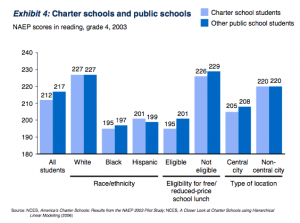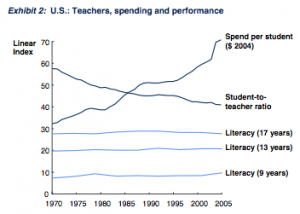From the paper How the worlds best performing schools come out on top by McKinsey:
Though the best charter schools demonstrated significant improvements in student outcomes were possible, and certain chains of charter schools showed that reliable models could consistently deliver improvements in a succession of schools, in the aggregate, the results of the charter schools did not significantly outperform those of other schools. The National Assessment of Educational Progress (NAEP) went so far as to suggest that students in charter schools slightly underperformed their counterparts in public schools, even after allowing for student background (Exhibit 4).

The most compelling argument against charter schools is that they don’t deliver better outcomes. Even after cherry picking the best (or as often, wealthiest) students out of the public school system.
They also measured the effect of simple fixes like throwing money at the problem (in the form of teachers) to reduce student teacher ratios.
Reduced student teacher ratios didn’t help. Other attempts at decentralizing educational policy ranged from ineffective to disastrous. So what does wok?
The highlights of the study are that, “To improve instruction, these high-performing school systems consistently do three things well:”
- They get the right people to become teachers (the quality of an education system cannot exceed the quality of its teachers).
- They develop those people into effective instructors (the only way to improve outcomes is to improve instruction).
- They put in place systems and targeted support to ensure that every child is able to benefit from excellent instruction (the only way for the system to reach the highest performance is to raise the standard of every student).
This paper highlights findings I’ve read elsewhere–Finland and Singapore didn’t create the best educational systems in the world by segregating the students. They focused on improving the quality of instruction for every student. The difference between the best performing students in Finland and any OECD nation are comparable. The top systems are better because of how far up they bring their lowest performing students.


You must be logged in to post a comment.